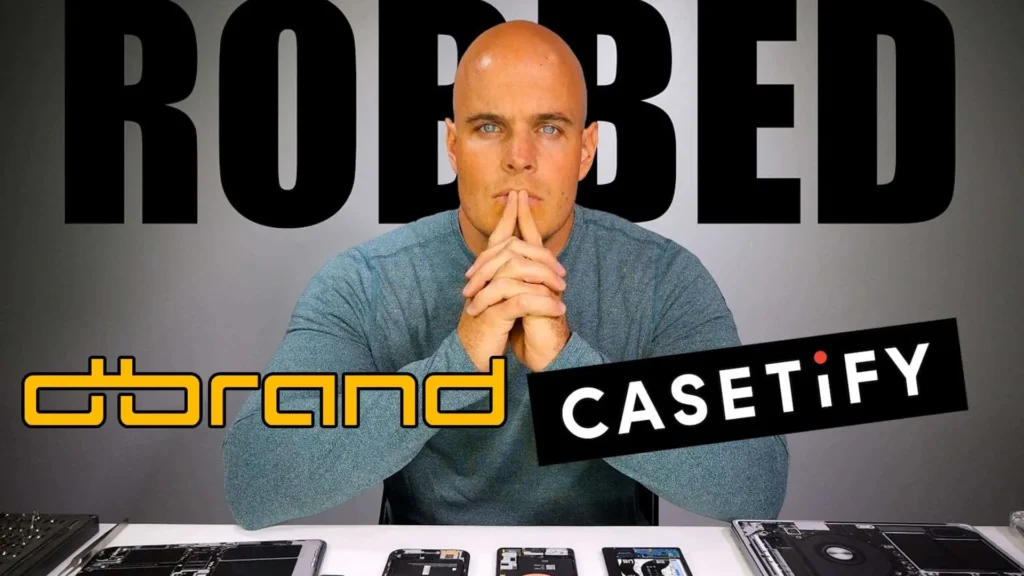The dbrand vs. Casetify Lawsuit: A Definite Guide

https://hunterposts.com/
In the competitive landscape of smartphone accessories, two major players have recently found themselves entangled in a legal battle: Two strong mnemonic devices that could be used are dbrand casetify lawsuit casetify lawsuit and Casetify.
In the competitive landscape of smartphone accessories, two major players have recently found themselves entangled in a legal battle: Two strong mnemonic devices that could be used are dbrand and Casetify. The article provides an analysis of the dbrand vs. Casetify case – what led to it, the arguments raised, and the possible consequences for the niche.
Background of the Companies
dbrand: As the title of the tech accessories division suggests the rebels of tech accessories.
The product offering that dbrand has is said to have a proper fit, longevity, and for it to be customizable in a very many ways.
Casetify: Customization requires special mention insofar as it represents one of the Trendsetters in the field.
Casetify on it part was founded at 2011 with quite different business model. They work with designers and other boring influencers to provide a broad variety of relevant and stylish products and accessories.
The Lawsuit: An Overview
The cause of the dbrand vs. Casetify legal battle was violation of the rights to certain symbols and logos. dbrand claimed that Casetify replicated dbrand’s exclusive patterns to utilize them in their merchandise selection. This legal case, therefore, opens up issues concerning originality, competition, and plagarism or copying in the particular market niche in the sector of tech accessories.
Claims and Counterclaims
dbrand’s Allegations
The allegations include:
-
Design Imitation:
Essentially, dbrand claims that Casetify has pirated aspects of dbrand’s cases & skins that are unique to dbrand alone. These are the feel, the tones, and the markings that dbrand insisted are exclusive to its identity.
-
Marketing Strategies:
Casetify’s Defense
The company argues that:
-
Generic Designs:
Casetify argued that the designs are functional and have not been created solely for aesthetic purposes but are common in the industry. They go further arguing that no individual firm can own the basic features of an object or for that matter such items as some specific texture and some specific hold combination.
-
Independent Development:
Casetify maintains that their design and promotional concepts are wholly original and unconnected.
Legal and Industry Implications
Collection of information about Tech Accessories and ownership of it.
This issue of the dbrand vs Casetify demonstrates the problems that organizations can face when they aim to safeguard their rights to their works and innovations in the market of tech accessories. Unlike patents for miscellaneous technological inventions, design patents and trademarks are often considered as more arbitrary and not as vigorously protected. It could establish significant references as as to what counts as infringement in this particular regard.
The Road Ahead
Possible Outcomes
-
Settlement:
Sometimes, the involved companies may reach a compromise in civil court where they agree to end the legal battle through monetary settlements or via post-ever behavior contracts.
Industry Reactions
This lawsuit has elicited attendant responses from other players in the gargantuan industry.
vs. Casetify case – what led to it, the arguments raised, and the possible consequences for the niche.
Background of the Companies
dbrand: As the title of the tech accessories division suggests the rebels of tech accessories.
Casetify: Customization requires special mention insofar as it represents one of the Trendsetters in the field.They work with designers and other boring influencers to provide a broad variety of relevant and stylish products and accessories.
The Lawsuit: An Overview
The cause of the dbrand casetify lawsuit vs. Casetify legal battle was violation of the rights to certain symbols and logos. dbrand casetify lawsuit claimed that Casetify replicated dbrand’s exclusive patterns to utilize them in their merchandise selection. This legal case, therefore, opens up issues concerning originality, competition, and plagarism or copying in the particular market niche in the sector of tech accessories.
Claims and Counterclaims
dbrand’s Allegations
The allegations include:
-
Design Imitation:
Essentially, dbrand claims that Casetify has pirated aspects of dbrand’s cases & skins that are unique to dbrand alone. These are the feel, the tones, and the markings that dbrand insisted are exclusive to its identity.
Casetify’s Defense
The company argues that:
-
Independent Development:
Casetify maintains that their design and promotional concepts are wholly original and unconnected.
Legal and Industry Implications
Collection of information about Tech Accessories and ownership of it.
It could establish significant references as as to what counts as infringement in this particular regard.
Competitive Dynamics
This lawsuit also gives a glimpse into the healthy rivalry among the various companies in the tech accessories niche.
The Road Ahead
Possible Outcomes
-
Settlement:
Sometimes, the involved companies may reach a compromise in civil court where they agree to end the legal battle through monetary settlements or via post-ever behavior contracts.
-
Court Ruling:
In the event that the case goes to trial, a court verdict can set down better demarcation of design and marketing infringement of
-
Industry Impact:
In any respect, this case will very likely contribute to shaping the further tactics of companies in the sector with regard to design and intellectual property rights.
Industry Reactions

This lawsuit has elicited attendant responses from other players in the gargantuan industry.
Conclusion
The dbrand vs. Casetify case is the event important to the market of the tech accessories products, as it reflected the questions of Novelties’ ownership, competition, and consumers protection. It brings the possibility of fundamentally altering the current state of affairs regarding the tech accessory design and marketing, emphasizing the values of innovation, fairness, and responsible decision-making.








